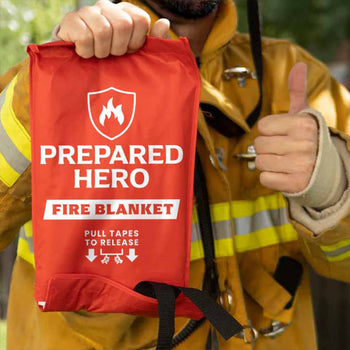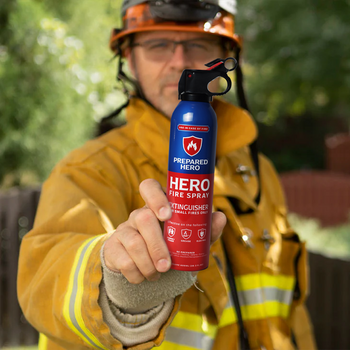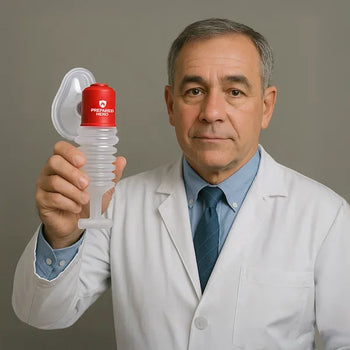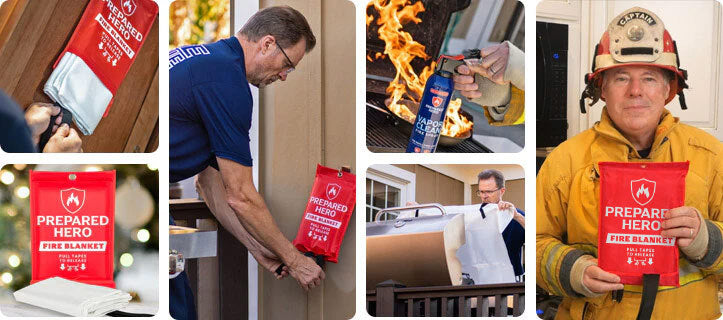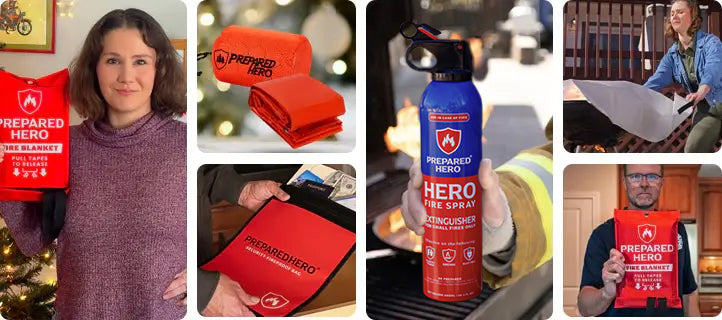Where you put your smoke detectors matters just as much as installing them. Proper placement makes sure they can detect...
Fire is both a useful and dangerous thing. It helps us cook food and manufacture items like glass and metal. On the other hand, it can be life-threatening once it gets out of control. But what exactly is fire? How does it start? How fast does it spread? How can you protect your family from it?
In this post, we’ll talk about fire, what it’s made of, how it spreads, how to prevent it, and more.
What Is Fire?

Fire is a chemical reaction that occurs when fuel combines with oxygen, producing heat and light. It can’t occur without three things: oxygen, fuel, and heat. These three elements make up the fire triangle, and removing one of these elements stops the reaction. As a result, the fire can’t sustain itself and dies out.
The process through which fire occurs is called combustion. It happens between fuel and oxygen in the air. But for combustion to occur, the fuel should be heated until it reaches its ignition temperature.
Combustion can happen slowly or quickly depending on the amount of oxygen and fuel available. For instance, a flashover or rapid fire progress occurs when there are a lot of flammable items and oxygen.
Most residential and commercial fires start within the building. For instance, dropping a burning cigarette into a trash can with paper could start a fire. The cigarette is the heat source, and with oxygen in the air, the paper (fuel) burns. If the fire is not extinguished early, it could spread to other areas, especially if there are many flammable items around.
The Fire Triangle

The fire triangle or combustion triangle is composed of three elements that start and sustain a fire: heat, fuel, and oxygen.
Heat ignites the fuel and helps the fire spread. It works by drying out and heating the fuel until it reaches its ignition temperature. Different materials have different ignition temperatures. The lower the ignition temperature, the easier it is for the material to burn. Heat also warms up the surrounding air. Unfortunately, fire produces heat as it burns, which further increases the fuel’s temperature.
The next element of the fire triangle is the fuel. It is the material that burns. Houses and other buildings are filled with fire hazards that can serve as fuel. Common fuels include paper, gasoline, and wood. Fuels are also the most difficult component to remove, so they should be stored in places with low temperatures.
The last element of the fire triangle is oxygen. It reacts with the fuel to produce heat and other combustion by-products like smoke and embers. This process is called oxidation, which will continue as long as heat, oxygen, and fuel are present. The atmosphere is also made up of 21% oxygen, so there’s plenty of oxygen to start a fire. On a positive note, oxygen is the easiest component to remove. This is why fire blankets can remove oxygen quickly.
How Do Fires Start?

Fire starts when oxidation creates heat faster than it releases it. From cooking mishaps to electrical issues, fires can start through any activity that involves heat, oxygen, and fuel. Here are the top ways fires start:
Unattended Cooking
According to the National Fire Protection Association (NFPA), cooking is the number one cause of residential fires and fire-related injuries.
For example, oven fires can occur if grease buildup inside the oven gets heated up when baking. The fire can then spread to other flammable items nearby, including paper towels and curtains.
Frying with vegetable oil can also start a fire. Oil gets hot quickly and is more difficult to put out than other types of fire. Plus, you should never use water to put out a grease fire because it can spread the fire and make it explode.
Using Heaters
Space heaters, fireplaces, radiators, fire pits, and other hitting equipment can start fires if they’re too close to flammable items.
For instance, putting a space heater close to a candle or curtains can cause the said items to ignite. Even if the heater has an automatic shutdown feature, it’s still risky. Find out how to prevent heating appliances from causing fires here.
Similarly, using a fireplace without a screen lets embers escape and land on flammable items like rugs and magazines. Check out the top fireplace safety tips here.
Lighting Candles
According to the Federal Emergency Management Agency (FEMA), candles cause 23,600 home fires, 1,525 injuries, and 165 deaths annually. While candles smell and look nice, they’re a fire hazard you shouldn’t ignore. Alternatives like LED candles, fragrance spheres, and wax warmers also exist, and they’re much safer than candles with flames.
But if you’re a candle enthusiast who can’t let go of real candles, we recommend following candle safety practices that’ll protect your family and property. Find out more about candle safety here.
Smoking
Smoking can cause fires if you leave or throw burning cigarettes away. Vaping does the same thing. Vapes with coils are more dangerous because they use cotton and can burn more easily than disposable ones.
For instance, someone throws a burning cigarette into the trash can with paper, plastic, and other flammable items. The heat from the cigarette can ignite the trash and quickly spread the flames to items outside the trash can.
Similarly, someone charging their vape overnight is dangerous. If the charger or battery doesn’t work, it can overheat while charging. This can lead to a fire, especially if the vape is too close to flammable items like paper, clothes, or curtains. Find out how to prevent smoking and vaping from causing fires here.
Electrical Malfunctions
Electrical malfunctions can cause fires that are usually harder to put out because of the wiring and appliances involved. Using water to put out an electrical fire is dangerous because water is a conductor. Mixing water with electricity will get you electrocuted and leave you with first- or second-degree burns.
For instance, plugging multiple devices into a power strip can cause the outlet to overheat, spark, and burn. The fire can then spread to other areas, like walls and furniture.
Another example is frayed cords. Using a lamp with a frayed power cord can create sparks and generate heat. Exposed wires are dangerous because they can damage your appliance or devices, electrocute you, and cause electrical fires. Find out how to put out electrical fires here.
Using Flammable Liquids and Gases
Using flammable liquids can also start fires if they’re not handled properly. For example, using gasoline to fuel your lawnmower poses a fire risk. If the gasoline spills on the floor and there’s a nearby spark, the vapors can ignite.
Another example is when you use cleaning products like aerosol sprays or solvents near an open flame or heat source. The heat can quickly ignite the flammable liquids and burn other items nearby. Find out how to store flammable liquids and gases here.
Playing With Fire
Kids are naturally curious, and many like playing with fire. For instance, a six-year-old boy finds matches and lights a pile of leaves in the backyard for fun. What starts as a seemingly harmless flame can quickly get out of control, especially if the wind picks up. Fire will quickly burn the grass and reach your house.
In another example, a five-year-old girl finds a lighter and thinks it’s a toy. She then uses it to burn paper, which quickly burns. The flames amaze her, and she continues using the lighter until the fire spreads. Learn more about fire safety for children here.
How Do Fires Spread?

Fire spreads when other flammable items aside from the original fuel catch fire. As the flames become bigger and hotter, more objects will ignite. These include wallpaper, curtains, cupboards, and carpets. Then, dense, hot smoke rises and spreads across the ceiling.
Inhaling the said smoke can quickly burn your breathing passages. Fire also generates poisonous gases like carbon monoxide and cyanide at this point, with two or three breaths of it leaving you unconscious.
Next, the fire gets stronger in two minutes. The intense heat then radiates to other parts of the house, heating up furniture, walls, and the ceiling. Then, the cloud of smoke thickens and deepens under the ceiling.
Carbon monoxide and cyanide levels also increase at this point― usually by 3,400 parts per million (normal levels in enclosed room fires). At this point, your survival time goes down to less than a minute. Studies revealed that carbon monoxide poisoning causes more fire-related deaths than any toxic combustion product, so it’s extremely dangerous.
In three minutes, the fire's temperature will continue rising up to a point where it’s enough to kill people. The fire will continue burning things all over your house as it generates more heat. The smoke cloud will also become more dense and hover a few feet above the ground. It might also include more toxic chemicals like arsenic, ammonia, lead, and hydrogen chloride, depending on the fuel.
At this point, the fire can spread in two ways: auto-ignition and direct contact. Auto-ignition occurs when objects spontaneously burst into flames without fire touching them. On the other hand, direct contact happens when fire directly touches the objects, and they burst into flames.
Two minutes after this, the house can go into the decay stage. This stage is the longest because the fuel and oxygen decrease. Each house or building is different, so how the fire spreads varies. In general, flames can totally engulf a house in as fast as five minutes.
How Fast Do Fires Spread?

Fire can spread in as fast as 30 seconds. It spreads quickly if there’s more heat, fuel, and oxygen. How fast the elements of the fire triangle increase determines how fast the fire spreads. For instance, a fire in a warehouse for paper products will spread faster than a warehouse for metal products.
Fire starts to grow in one minute. As it spreads, dense, hot smoke rises and spreads across the ceiling. Fire can also produce toxic gases at this point, which can make you pass out.
Fire then gets stronger in two minutes with the heat going over 190°F or 87.8°C. Other parts of the house or building get hotter. As a result, furniture, walls, decor, and the ceiling start to burn. Once the smoke passes through door gaps, open windows, or vents, it quickly goes out of the room. Then, the toxic gases can go to the top floor.
In three minutes, the fire's temperature increases to 400°F or 204.4°C, which is high enough to kill people. The fire will continue consuming fuel all over the house or building, and the smoke will continue rising until it’s a few feet above the ground. This cloud of smoke will likely contain toxic chemicals like lead, arsenic, ammonia, and isocyanates.
In three and a half minutes, the heat can increase up to 1,100°F or 593°C. A flashover can break out at this point. During a flashover, everything in a room ignites. At this point, oxygen is quickly consumed because of rapid combustion. As a result, windows will shatter, and the floor or floors above will be filled with thick, hot smoke that will block the stairs.
In four minutes, the temperature will get to 1,400°F or 760°C. At this point, flames will travel vertically and horizontally across rooms. In five minutes, the house can be fully engulfed in flames and start to decay. The decay stage occurs when fuel and oxygen decrease because the fire has consumed most of them. However, it will take at least an hour for a house to burn down completely.
Fire Colors and Their Temperatures

Being familiar with fire colors and their temperatures helps you handle fires safely. Flame colors can tell you how hot the fire is and how it’s burning. Learn more about fire colors below:
Red Fire
A red flame is common in charcoal or wood fires, where the fire is not intense. The red color can also mean that the embers are glowing. Red fire is usually the least intense, with temperatures around 977 to 1,830°F (525 to 999°C).
Orange Fire
Orange flames usually occur in fireplaces, fire pits, and campfires. The fire’s temperature is moderately intense, which ranges from 2,010 to 2,190°F (1099 to 1199°C). The orange color indicates that the fire is active and produces a decent amount of heat. It’s also the most common flame color.
Yellow Fire
A bright yellow flame indicates a more intense combustion. This color often occurs while cooking. A yellow flame has a temperature of 2,192 to 2,552°F (1,200 to 1,400°C).
Blue Fire
A blue flame indicates a complete combustion. This means that the oxygen and fuel react efficiently, which is crucial in controlled settings like factories and laboratories. Blue fire is often produced by gas stoves, Bunsen burners, and blowtorches. Its temperature ranges from 2,552 to 2,912°F (1,400 to 1,600°C).
White Fire
White flames indicate extremely high temperatures, which can go up to 3,000°F (1,649°C). This color often occurs when the fire is too intense, like when welding or melting metals.
Purple Fire
Purple flames are the most intense of fires. They can burn up to 3,038°F (1,670°C), which is just a little more than white fire. This makes them hot enough to melt strong materials like cast iron, steel, porcelain, and titanium.
What Is Fire Made Of?

Fire is made of carbon dioxide, water vapor, oxygen, and nitrogen. In a usual combustion reaction, a carbon-based fuel reacts with oxygen and heat. This results in a simpler composition of gases from the fuel with the combustion’s by-product.
However, incomplete combustion occurs sometimes. When this happens, other components exist, such as soot. Soot is made of carbon and other organic particles. Other gases may also be present, including carbon monoxide, nitrogen oxides, and sulfur oxides.
For example, a campfire might produce minimal soot if the combustion is complete. When wood burns, it produces fires made of carbon dioxide, water vapor, oxygen, and nitrogen. As the wood burns, the heat breaks it down. This process releases volatile compounds that vaporize and contribute to the flames.
If the combustion is complete, you’ll see bright yellow-orange flames with minimal soot. But if the wood is wet or the oxygen isn’t enough, soot will form. The fire might release carbon monoxide as well.
What State of Matter Is Fire?
Fire is a chemical reaction that includes different states of matter―solid, gas, and/or liquid. However, wood fires, gasoline fires, and paint thinner fires are not equal. The chemistry of each fire is different, and they eventually die out, unlike solids, liquids, and gases, which exist in the same state.
Plus, most of the fire’s output comes in the form of heat. As the gas warms up, it rises and gives the flame its teardrop shape. The flame holds its shape because chemical reactions happen in different spots. Think about the fuel coming out of a gas stove. The only spot where combustion can happen is where the oxygen and fuel meet. The fire starts there and reaches a steady state, where the rates of oxygen, fuel, carbon dioxide, and water vapor being emitted are the same.
Due to this, fire is classified as plasma, which is not solid, liquid, or gas. It’s a transient state between the elements before ignition and the fumes spent. When fire burns, the fuel’s molecules combine with the oxygen. The energy released causes the plasma state, which transforms it into heat and light (the flame).
However, some sources say that fire is not plasma because regular fire is not hot enough to become a bulk solution of ionized gas. Plus, plasma has more of a technical definition that regular flames don’t fit.
How to Prevent Fires

Knowing how to prevent fires helps save lives, protect properties, and prevent financial ruin. Here’s how to prevent fires:
1. Identify fire risks and hazards.
Contrary to popular belief, fire risks and hazards are different. A fire risk refers to the likelihood of a fire happening and its consequences. It includes the activities or situations (not the objects) that can result in fires. On the other hand, a fire hazard refers to anything that can start a fire or help spread it. For instance, unattended cooking is a fire risk, while oil is a fire hazard.
It’s important to identify the risks and hazards associated with fire because it can save lives, protect properties, promote fire safety awareness, and make communities more resilient.
2. Install fire safety equipment.
Once you’re done listing down the fire risks and hazards, take a look at your surroundings. Do you see any fire safety equipment? If you barely see anything, it’s time to install them.
According to the NFPA, you should install at least one smoke alarm on every floor and one in each bedroom. The exact number varies depending on the size of your house and the fire hazards in it. For instance, a two-floor house with five bedrooms needs more fire alarms than a one-bedroom apartment.
You should also consider having fire sprinklers, which automatically douse the fire. They’re useful in high-risk areas, including kitchens and workshops.
3. Have a fire prevention kit.
A fire prevention kit is made of tools that help contain fire. These include fire blankets, fire sprays, and fire gloves.
Fire blankets are made of fire-resistant materials that can withstand extremely high temperatures. They work by removing oxygen from the equation, which quickly puts out the fire. You can also use it to save someone on fire, especially if they can’t stop, drop, and roll.
Meanwhile, fire sprays are great alternatives to heavy and bulky fire extinguishers. Plus, they’re easy to use, eco-friendly, and non-toxic. You can use fire protection gloves to protect your hands from burns when grilling or evacuating your house. Plus, you can use it as an extra layer of protection when using fire blankets and fire sprays.
4. Make a fire escape plan.
Identify the exit routes in your house or building. Are you escaping through a window, balcony, or roof when a fire occurs? Do you need a ladder to do so? Clearly mark these exits when making your fire escape plan.
Don’t forget to assign roles and responsibilities as well. Doing this prevents confusion and panic when a fire occurs. Make sure to assign them based on people’s capabilities. For instance, you shouldn’t rely on kids to guide your family during evacuation.
5. Educate your family.
Fire prevention tools and escape plans are useless if no one knows how to use them. Teach your family members or co-workers about the dangers of fire. Conduct fire drills to make sure everyone knows how to act if a fire occurs. The more informed your family is, the more prepared they are for fire emergencies.
Conclusion
While fire can help us cook and make things, it can be life-threatening if we’re not careful. By knowing about how fires start and spread, we make smart choices to prevent them. At the end of the day, being informed makes a huge difference. Stay prepared, hero!


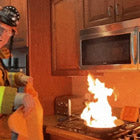 Fire
Fire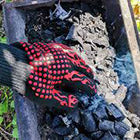 Safety
Safety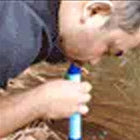 Survival
Survival Protection
Protection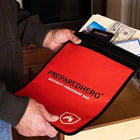 New
New
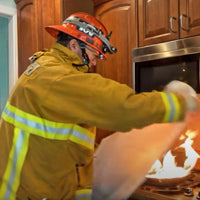 Fire
Fire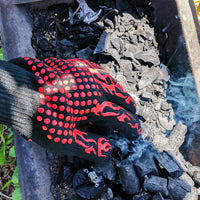 Safety
Safety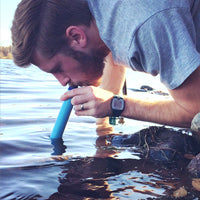 Survival
Survival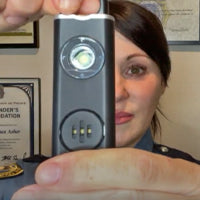 Protection
Protection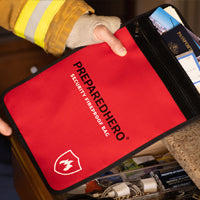 New
New
